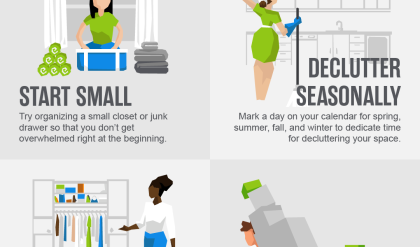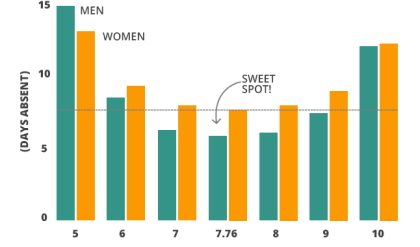
10 Genius Life Hacks to Simplify Your Daily Routine
Feeling overwhelmed by the daily grind? We all crave that elusive feeling of effortless productivity. The good news? It’s not about superhuman abilities, but smart strategies. These ten genius life hacks are designed not just to save you time, but to inject joy and ease into your everyday rhythm.
1. The “Two-Minute Rule” – Conquer the Clutter Monster
This isn’t your grandma’s tidying-up advice. The Two-Minute Rule tackles those nagging small tasks that snowball into overwhelming clutter. If a task takes less than two minutes (washing a single dish, responding to a quick email), do it immediately. Don’t let it linger, creating mental clutter alongside the physical one. This proactive approach prevents small tasks from becoming monumental mountains.
2. Batching: The Productivity Powerhouse
Group similar tasks together. Instead of bouncing between emails, social media, and work projects, dedicate specific time blocks to each. This reduces mental switching costs, boosting focus and efficiency. Think “email hour,” “creative writing block,” or “errand day.”
3. The “Power Hour” – Unleash Your Inner Superhero
Dedicate a single hour each day to tackling your most important task. Eliminate distractions, put your phone on silent, and focus with laser precision. The sense of accomplishment is incredibly rewarding and sets a positive tone for the rest of the day.
4. Automate Your Mundane: Embrace Technology
From bill payments to email subscriptions, automate as much as possible. Utilize online banking, recurring payments, and email filters. This frees up mental space and precious time for more meaningful activities.
5. The “Prep-Ahead” Principle: Conquer Chaos Before It Starts
Spend 15-30 minutes on Sunday evening prepping for the week ahead. Pack lunches, lay out clothes, plan meals. This small investment dramatically reduces morning stress and ensures a smoother start to each day.
6. The “One-In, One-Out” Rule – Declutter with Discipline
For every new item that enters your home, get rid of a similar one. This prevents accumulation and keeps your space feeling organized and calm. This applies to digital clutter too – unsubscribe from unwanted emails and delete unnecessary files.
7. Mindful Mornings: Set the Tone for Success
Start your day with intention. Instead of rushing, take a few moments for mindfulness – meditation, stretching, or simply enjoying a cup of tea. This creates a sense of calm and prepares you for the day ahead.
8. The “Eat the Frog” Method – Tackle the Toughest First
Identify your most challenging task and tackle it first thing in the morning. Getting it out of the way removes a major source of anxiety and allows you to approach the rest of your day with a sense of accomplishment.
9. The Pomodoro Technique: Focused Bursts of Productivity
Work in focused 25-minute intervals, followed by a 5-minute break. This technique helps maintain concentration and prevents burnout. After four “pomodoros,” take a longer break.
10. Delegate and Outsource: Share the Load
Don’t be afraid to ask for help. Delegate tasks at work or home, or outsource chores you dislike. This frees up your time and energy for what you do best.
Life Hacks Summary Table:
| Life Hack | Description | Benefit |
|---|---|---|
| Two-Minute Rule | Do it now if it takes <2 minutes | Reduces clutter, mental and physical |
| Batching | Group similar tasks | Increases focus, improves efficiency |
| Power Hour | Focus intensely on one task for 1 hour | Achieves significant progress, boosts morale |
| Automate Mundane Tasks | Use technology for repetitive tasks | Saves time, reduces stress |
| Prep-Ahead | Prepare in advance | Smooth mornings, less stress |
| One-In, One-Out | Declutter consistently | Prevents accumulation, maintains order |
| Mindful Mornings | Start with intention and mindfulness | Sets positive tone, reduces stress |
| Eat the Frog | Tackle toughest task first | Reduces anxiety, boosts accomplishment |
| Pomodoro Technique | Work in focused bursts with breaks | Maintains concentration, prevents burnout |
| Delegate & Outsource | Share workload | Frees time and energy |
Implementing even a few of these life hacks can dramatically simplify your daily routine, leaving you feeling more organized, productive, and ultimately, happier. Experiment, find what works best for you, and enjoy the journey towards a more effortless life.

Additional Information
Deep Dive into 10 Genius Life Hacks for Routine Simplification: An Analytical Perspective
While a “life hack” often suggests a simple trick, effective routine simplification requires a deeper understanding of time management, cognitive load, and behavioral psychology. The following analysis delves into ten commonly cited life hacks, examining their underlying principles and offering insights for maximized impact.
1. Time Blocking: This isn’t just about scheduling appointments; it’s about consciously allocating time for specific tasks, including breaks. Analysis: Time blocking leverages the Zeigarnik effect – the tendency to remember incomplete tasks better than completed ones. By assigning dedicated time slots, you reduce the cognitive load of remembering everything, minimizing stress and improving focus. Example: Instead of vaguely planning “work on project X,” schedule “9:00-11:00 AM: Project X – Phase 1”. Value-added: Integrate Pomodoro Technique (25-minute work intervals with short breaks) for optimal concentration and to combat burnout.
2. Batch Similar Tasks: Grouping similar activities reduces context switching costs. Analysis: The human brain requires time to shift focus between different types of tasks. Context switching consumes cognitive resources and reduces efficiency. Example: Respond to all emails at designated times instead of sporadically throughout the day. Value-added: Categorize tasks based on their cognitive demands (e.g., high-focus vs. low-focus) and schedule accordingly to optimize your energy levels throughout the day.
3. Two-Minute Rule: If a task takes less than two minutes, do it immediately. Analysis: This combats procrastination by addressing small tasks before they accumulate into overwhelming to-do lists. Example: Immediately washing a dish instead of leaving it in the sink. Value-added: Applying the Pareto Principle (80/20 rule) to identify the 20% of tasks yielding 80% of the results. Focusing on these high-impact tasks first maximizes your efficiency.
4. Prepare the Night Before: Lay out clothes, pack lunches, and organize necessary materials. Analysis: This reduces morning decision fatigue, a phenomenon where repeated decision-making throughout the day diminishes cognitive resources, leading to poor choices. Example: Preparing breakfast ingredients the night before allows for a quicker, less stressful morning routine. Value-added: Extend this principle to weekly meal planning, drastically reducing grocery shopping time and impulsive food choices.
5. Utilize Technology: Employ calendar apps, to-do lists, automation tools (e.g., IFTTT). Analysis: Technology can streamline processes and reduce manual effort. Example: Using a smart home device to automate lighting or temperature control. Value-added: Choose apps strategically; avoid overwhelming yourself with numerous tools. Select those that integrate seamlessly with your existing workflow.
6. Declutter Regularly: A tidy space promotes a tidy mind. Analysis: Studies show a correlation between cluttered environments and increased stress and anxiety. A clean space reduces visual distractions and promotes mental clarity. Example: Dedicate 15 minutes each day to tidying a specific area. Value-added: Implement the “one in, one out” rule to prevent future clutter accumulation.
7. Automate Bills and Subscriptions: Set up automatic payments to avoid late fees and reduce mental load. Analysis: This frees up mental space and prevents the stress associated with managing recurring payments. Example: Setting up auto-pay for utilities and subscriptions. Value-added: Regularly review subscriptions to eliminate unnecessary services and save money.
8. Learn to Say No: Protect your time and energy by declining commitments that don’t align with your priorities. Analysis: Saying “no” prevents overcommitment and burnout. It’s crucial for maintaining a sustainable routine. Example: Politely declining social invitations if you need time for self-care. Value-added: Practice assertive communication techniques to effectively decline requests without feeling guilty.
9. Prioritize Sleep: Adequate sleep improves cognitive function, mood, and productivity. Analysis: Sleep deprivation negatively impacts decision-making, concentration, and overall well-being. Example: Maintaining a consistent sleep schedule, even on weekends. Value-added: Create a relaxing bedtime routine to promote better sleep hygiene.
10. Practice Mindfulness: Regularly engaging in mindfulness activities reduces stress and enhances focus. Analysis: Mindfulness techniques, such as meditation, improve attention span and emotional regulation, leading to improved efficiency and productivity. Example: Practicing 5-10 minutes of meditation each day. Value-added: Incorporate mindfulness into daily activities, such as paying attention to the sensation of your feet on the ground while walking.
By understanding the underlying principles and applying these life hacks strategically, individuals can create more efficient, less stressful, and ultimately more fulfilling daily routines. The key to success lies not just in adopting these hacks, but in adapting them to your individual needs and preferences, continuously evaluating their effectiveness, and making adjustments as necessary.






